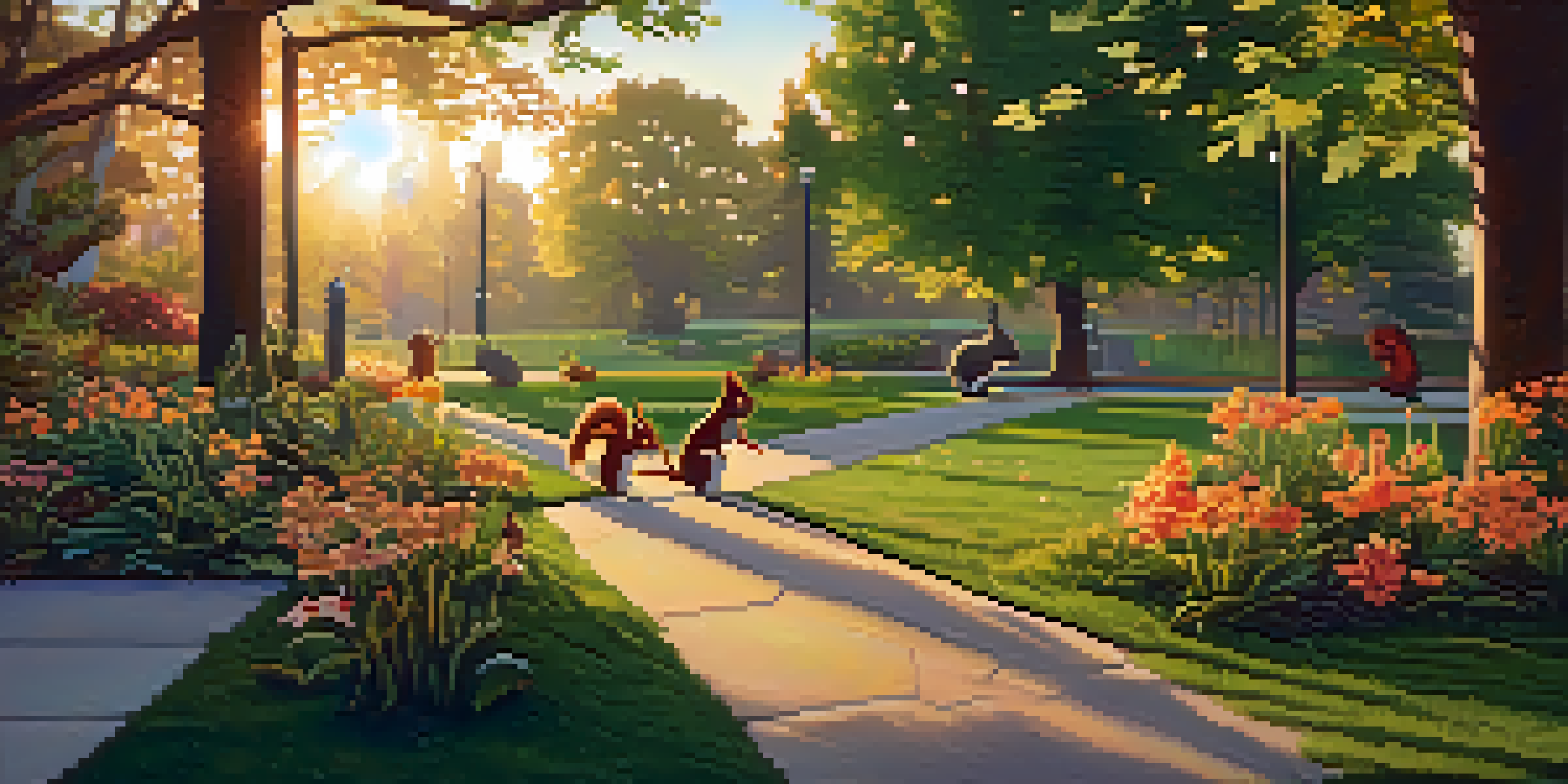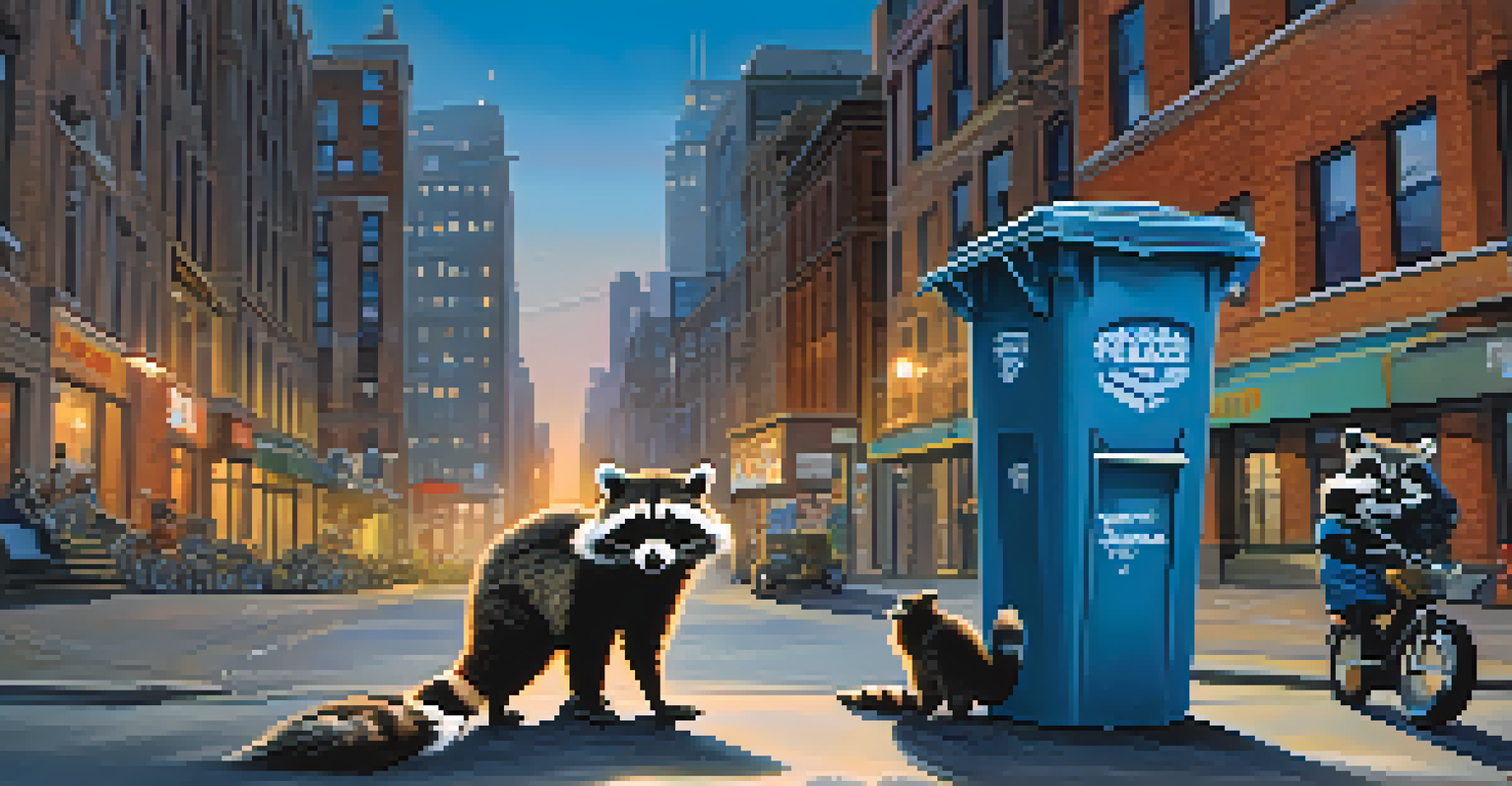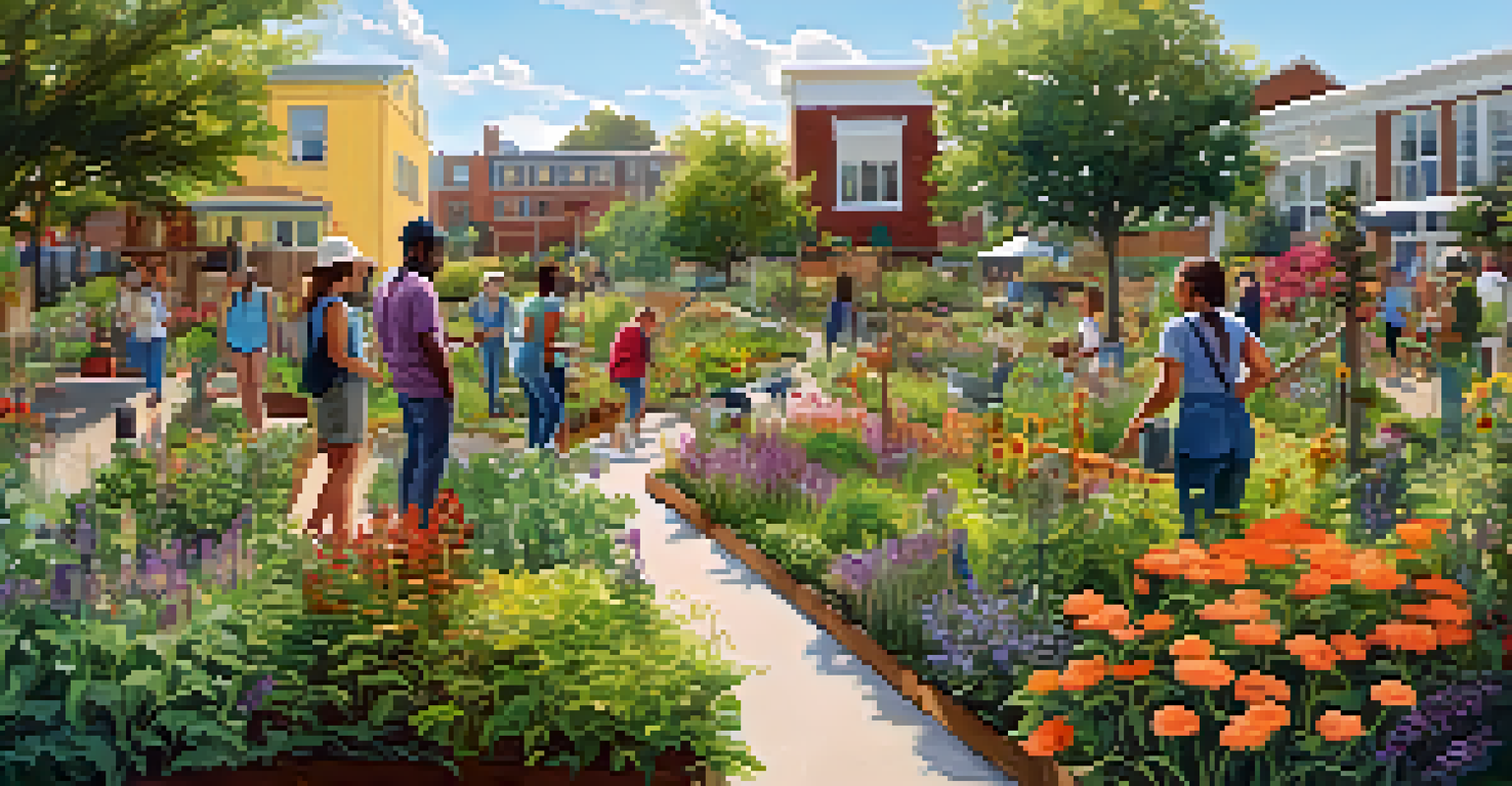Urban Wildlife: Understanding the Impact of City Life

The Surprising Presence of Wildlife in Cities
When we think of cities, we often picture skyscrapers, traffic, and bustling crowds. However, urban areas are also home to a surprising variety of wildlife. From squirrels and raccoons to hawks and even foxes, many species have adapted to city life, finding food, shelter, and even mates amidst the concrete jungle.
In every walk with nature one receives far more than he seeks.
This adaptation is fascinating because it shows how resilient wildlife can be. Animals learn to navigate human environments, utilizing parks, gardens, and even alleyways as part of their habitat. For instance, pigeons have become synonymous with city life, thriving in urban environments where they find ample food and nesting sites.
Understanding this presence of wildlife is crucial for city planners and residents alike. By recognizing the species that share our urban spaces, we can create more wildlife-friendly environments that support biodiversity while enhancing our quality of life.
Challenges Wildlife Face in Urban Areas
Despite their adaptability, urban wildlife faces numerous challenges that can threaten their survival. Habitat loss is a significant issue, as cities expand and natural areas are converted into roads and buildings. This loss often forces wildlife to compete for limited resources, leading to increased stress and lower populations.

Pollution is another critical factor impacting urban wildlife. Contaminated water sources and air pollution can harm animals directly, affecting their health and breeding success. For example, birds may struggle to find clean nesting materials, while aquatic life can be affected by toxic runoff from city streets.
Urban Wildlife Adaptation
Many species have adapted to city life, utilizing urban environments for food and shelter.
Additionally, human-wildlife conflicts can arise as animals venture into neighborhoods searching for food. Incidents of animals rummaging through trash cans or seeking shelter in garages can lead to negative perceptions of wildlife. Education and awareness are vital in mitigating these conflicts and fostering coexistence.
The Role of Green Spaces in Urban Wildlife
Green spaces, such as parks and community gardens, play a crucial role in supporting urban wildlife. These areas provide essential habitats for various species, offering food sources, nesting sites, and safe corridors for movement. Even small patches of greenery can significantly impact local biodiversity.
The clearest way into the Universe is through a forest wilderness.
For instance, urban parks often attract a variety of bird species, creating a vibrant ecosystem within the city. Birdwatchers can enjoy spotting migratory species that use these green spaces as temporary rest stops during their journeys. Additionally, butterflies and bees thrive in gardens filled with native plants, contributing to pollination and ecosystem health.
By prioritizing the creation and maintenance of green spaces, cities can enhance the quality of life for both residents and wildlife. Incorporating green infrastructure, such as green roofs and rain gardens, can further support urban ecosystems while also providing aesthetic and recreational benefits.
Impact of Climate Change on Urban Wildlife
Climate change poses significant threats to wildlife, and urban environments are no exception. Rising temperatures, altered precipitation patterns, and extreme weather events can disrupt the delicate balance of urban ecosystems. For instance, certain species may find it challenging to adapt to new climate conditions, leading to shifts in their populations.
Additionally, urban areas often experience the heat island effect, where cities become significantly warmer than their rural surroundings. This can lead to increased stress on wildlife, particularly for species that are not adapted to higher temperatures. As a result, some animals may be forced to migrate to cooler areas, which can disrupt existing ecosystems.
Challenges for Urban Wildlife
Urban wildlife faces significant challenges, including habitat loss, pollution, and human-wildlife conflicts.
To combat these challenges, cities can implement climate adaptation strategies that support local wildlife. Creating shaded areas, maintaining water sources, and preserving natural habitats can help mitigate the impacts of climate change on urban wildlife populations.
Citizen Science: Engaging Communities with Urban Wildlife
Citizen science initiatives are a fantastic way to engage communities in monitoring urban wildlife. These programs encourage residents to observe and report wildlife sightings, contributing valuable data to researchers studying urban ecosystems. By participating, citizens not only learn about local species but also foster a sense of connection to their environment.
For example, projects like the Great Backyard Bird Count allow individuals to count and report bird species in their backyards. This collective effort helps scientists track trends in bird populations and understand how urbanization affects them. Furthermore, it instills a sense of stewardship among participants, motivating them to protect local wildlife.
Engaging communities in citizen science can also lead to increased awareness about the importance of biodiversity in urban areas. When people learn about the wildlife around them, they are more likely to support conservation efforts and advocate for wildlife-friendly policies in their cities.
Urban Wildlife and Public Health Considerations
The presence of wildlife in urban areas can have both positive and negative implications for public health. On one hand, urban wildlife can contribute to the overall well-being of residents by providing opportunities for nature exposure and stress relief. Studies have shown that spending time in green spaces can improve mental health, making wildlife interactions beneficial.
On the other hand, certain species can pose health risks, particularly if they come into close contact with humans. For example, raccoons can carry diseases like rabies, and their presence in urban settings can lead to concerns about transmission. Proper waste management and public education about avoiding wildlife interactions are essential in mitigating these risks.
Role of Green Spaces
Green spaces in cities provide essential habitats that support biodiversity and enhance the quality of life for both wildlife and residents.
Understanding the balance between the benefits and risks of urban wildlife is crucial for maintaining public health. Cities can implement strategies to promote safe coexistence, such as wildlife-proofing trash cans and educating residents about the importance of respecting wildlife habitats.
Future Directions for Urban Wildlife Conservation
Looking ahead, urban wildlife conservation will require innovative strategies that address the unique challenges of city living. Collaboration between city planners, conservationists, and community members is vital to create effective solutions that support both human and wildlife needs. This holistic approach can lead to the development of urban environments that prioritize biodiversity.
One promising direction is the integration of wildlife corridors into city planning. These corridors can connect fragmented habitats, allowing animals to move safely between green spaces. For instance, creating tunnels or bridges for wildlife to cross busy roads can significantly reduce roadkill incidents and support healthier populations.

Additionally, incorporating wildlife education into urban development projects can foster a culture of conservation. By raising awareness about the importance of urban wildlife, cities can inspire residents to take action, whether through volunteer efforts or advocating for policies that support biodiversity.